Hnefatafl: Ancient Viking Board Game “King’s Table” Popular In Medieval Scandinavia
Ellen Lloyd - AncientPages.com - Hnefatafl or tafl was an ancient Viking board game that became very popular in medieval Scandinavia. The Vikings played board games as early as 400 A.D. Hnefatafl was a war strategy game.
Viking chess hnefatafl on a carved board made of dark wood. Credit: Olga Makukha - Adobe Stock
The name means "King's Table," and although no description of the rules of the Hnefatafl exists, we know the game resembled chess, at least to some extent.
The king aimed to escape to the board's periphery or corners, while the greater force aimed to capture him. The attacking force has the natural advantage at the start of each game, likely indicating an essential cultural aspect by mimicking the success of Viking raids.
Vikings brought the board game to the lands they conquered, and eventually, the Hnefatafl became popular in other countries such as Ireland, Britain, Wales, and Iceland. Archaeological discoveries reveal the game was even popular in Ukraine.
The reconstructed Hnefatafl gameboard. Image credit: Andreas Zautner - Public Domain
In ancient times, board games were as popular as today. Board games were standard in ancient Egypt, Mesopotamia, and other parts of the world.
The Royal Game Of Ur played in Mesopotamia is at least 4,400 years old! It is widely considered one of the oldest game boards ever discovered. Board games such as Senet were widespread in ancient Egypt, and people from all levels of society played them.
The Vikings did not differ from other ancient civilizations. They, too, enjoyed board games.
Very little was known about the Viking board game for quite some time. Hnefatafl was mentioned in several medieval sagas, including the Orkneyinga saga, Friðþjófs saga, and Hervarar saga.
The earliest mention of the game appears in Vôluspa 60:
"Then in the grass, the golden taeflor ("table-men"),
the far-famed ones,
which they had owned in older days, will be found again."[8]
Both men and women played Hnefatafl. The Viking board is depicted on runestones.
The Ockelbo Runestone, Sweden, depicts two people playing the Hnefatafl. Image source
One runestone from Ockelbo, Sweden, shows two men balancing a board game on their knees. The image reflects the saga references where arguments over the game frequently cause one or both players to leap to their feet, upsetting the tafl-board and scattering the pieces.
Fragments of actual game boards have been excavated. One board discovered on the Viking ship Gokstad has a 15 × 15 ruled board on one side for tafl and what appears to be a nine-men-morris board (O.N. mylta, "mills") on the reverse side.
Hnefatafl was famous for a long time. In the 11th century, as chess grew in popularity, the magnificent ancient Viking board game became more or less forgotten. Only people living in remote areas played it.
Hnefatafl was last recorded as being played in Wales in 1587 and in Lappland in 1723.
Written by - Ellen Lloyd – AncientPages.com
Updated on January 17, 2024
Copyright © AncientPages.com All rights reserved. This material may not be published, broadcast, rewritten or redistributed in whole or part without the express written permission of AncientPages.com
Expand for referencesMore From Ancient Pages
-
 Centeotl: Lord Of Maize Who Was Revered Before The Olmecs By All Mesoamerica’s Inhabitants
Featured Stories | Feb 20, 2024
Centeotl: Lord Of Maize Who Was Revered Before The Olmecs By All Mesoamerica’s Inhabitants
Featured Stories | Feb 20, 2024 -
 Student Finds Beautiful Viking Age Silver Hoard In Aarhus, Denmark
Vikings | Aug 21, 2024
Student Finds Beautiful Viking Age Silver Hoard In Aarhus, Denmark
Vikings | Aug 21, 2024 -
 Enigmatic Underground Iron Age Monument At Navan Fort And Its Connection To The Ulster Kings Investigated
Archaeology | Aug 24, 2023
Enigmatic Underground Iron Age Monument At Navan Fort And Its Connection To The Ulster Kings Investigated
Archaeology | Aug 24, 2023 -
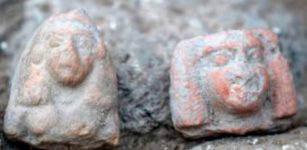 Remains Of 3,400-Year-Old Canaanite Citadel Unearthed In Nahariya, Western Galilee
Archaeology | Jan 6, 2016
Remains Of 3,400-Year-Old Canaanite Citadel Unearthed In Nahariya, Western Galilee
Archaeology | Jan 6, 2016 -
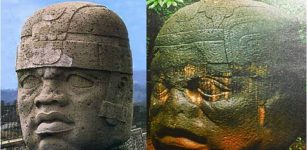 The Olmecs – Who They Were, Where They Came From Still Remains A Mystery
Civilizations | Feb 19, 2015
The Olmecs – Who They Were, Where They Came From Still Remains A Mystery
Civilizations | Feb 19, 2015 -
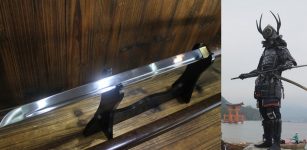 Secrets Of The Japanese Shirasaya Sword Mounting
Featured Stories | Sep 11, 2018
Secrets Of The Japanese Shirasaya Sword Mounting
Featured Stories | Sep 11, 2018 -
 Saqqara New Discoveries: Fifth Dynasty’s Pyramid Complex That Belonged To Queen Setibhor
Archaeology | Apr 15, 2019
Saqqara New Discoveries: Fifth Dynasty’s Pyramid Complex That Belonged To Queen Setibhor
Archaeology | Apr 15, 2019 -
 Fascinating Gigantic Creatures Today Totally Extinct 13,000 Years Ago Co-Existed With Early Americans
Archaeology | May 8, 2012
Fascinating Gigantic Creatures Today Totally Extinct 13,000 Years Ago Co-Existed With Early Americans
Archaeology | May 8, 2012 -
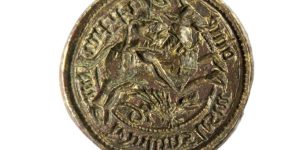 Rare Bronze Seal Matrix Of St. George Slaying The Dragon Discovered In French Castle
Archaeology | Mar 22, 2022
Rare Bronze Seal Matrix Of St. George Slaying The Dragon Discovered In French Castle
Archaeology | Mar 22, 2022 -
 Dangerous Anomaly Inside Mysterious European Mountain Remains Unexplained – Unusual Ancient Connections – Part 1
Ancient Mysteries | Mar 13, 2021
Dangerous Anomaly Inside Mysterious European Mountain Remains Unexplained – Unusual Ancient Connections – Part 1
Ancient Mysteries | Mar 13, 2021 -
 Something Never-Before-Seen Is Hidden Beneath 15 Giant Viking Burial Mounds Spotted By Radar In Norway
Archaeology | Jan 19, 2021
Something Never-Before-Seen Is Hidden Beneath 15 Giant Viking Burial Mounds Spotted By Radar In Norway
Archaeology | Jan 19, 2021 -
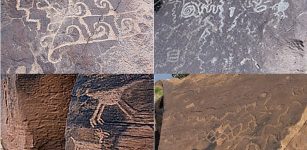 Lyman Lake Petroglyphs And Famous Kokopelli-Flute Player Left By Ancestors Of The Hopi Indians
Civilizations | Nov 26, 2018
Lyman Lake Petroglyphs And Famous Kokopelli-Flute Player Left By Ancestors Of The Hopi Indians
Civilizations | Nov 26, 2018 -
 Once-In-A-Lifetime Find – Ancient Roman and Saxon Cemetery Unearthed In Leeds
Archaeology | Mar 30, 2023
Once-In-A-Lifetime Find – Ancient Roman and Saxon Cemetery Unearthed In Leeds
Archaeology | Mar 30, 2023 -
 Historical Artifacts Found In The Mammoth Cave’s Mysterious Passageway
Archaeology | Jul 12, 2022
Historical Artifacts Found In The Mammoth Cave’s Mysterious Passageway
Archaeology | Jul 12, 2022 -
 Ajanta Caves: Incredible Accomplishment Of India’s Ancient Stonecutters
Featured Stories | Oct 1, 2015
Ajanta Caves: Incredible Accomplishment Of India’s Ancient Stonecutters
Featured Stories | Oct 1, 2015 -
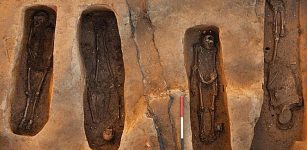 Jamestown: Unearthed graves with four bodies and a small sealed silver box
News | Aug 28, 2015
Jamestown: Unearthed graves with four bodies and a small sealed silver box
News | Aug 28, 2015 -
 Remarkably Well-Preserved 1,900-Year-Old Chinese Bronze Mirror Unearthed In Japan
Archaeology | Dec 29, 2017
Remarkably Well-Preserved 1,900-Year-Old Chinese Bronze Mirror Unearthed In Japan
Archaeology | Dec 29, 2017 -
 Lofn ‘Matchmaker’ – Norse Goddess Of Forbidden Marriages Of People Who Wish To Be Loved And Search For Partners
Featured Stories | Mar 25, 2021
Lofn ‘Matchmaker’ – Norse Goddess Of Forbidden Marriages Of People Who Wish To Be Loved And Search For Partners
Featured Stories | Mar 25, 2021 -
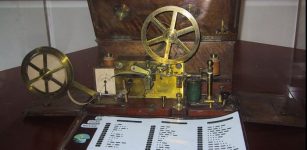 On This Day In History: Samuel F.B. Morse Receives A Patent For His Dot-Dash Telegraphy Signals – On June 20, 1840
News | Jun 20, 2016
On This Day In History: Samuel F.B. Morse Receives A Patent For His Dot-Dash Telegraphy Signals – On June 20, 1840
News | Jun 20, 2016 -
 Enoch – The Initiator – Pre-Flood Messenger Of God
Ancient Mysteries | Oct 5, 2015
Enoch – The Initiator – Pre-Flood Messenger Of God
Ancient Mysteries | Oct 5, 2015



